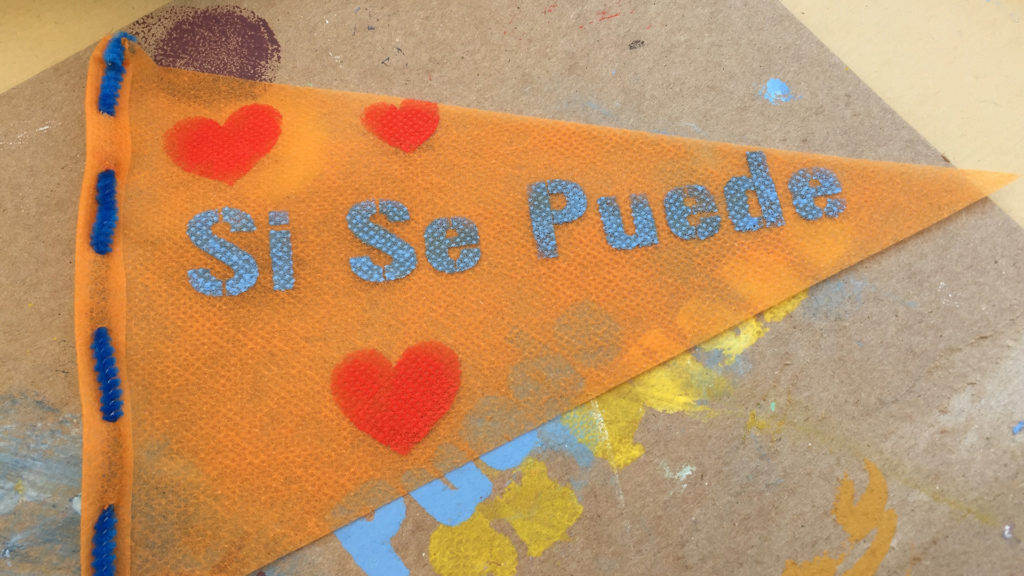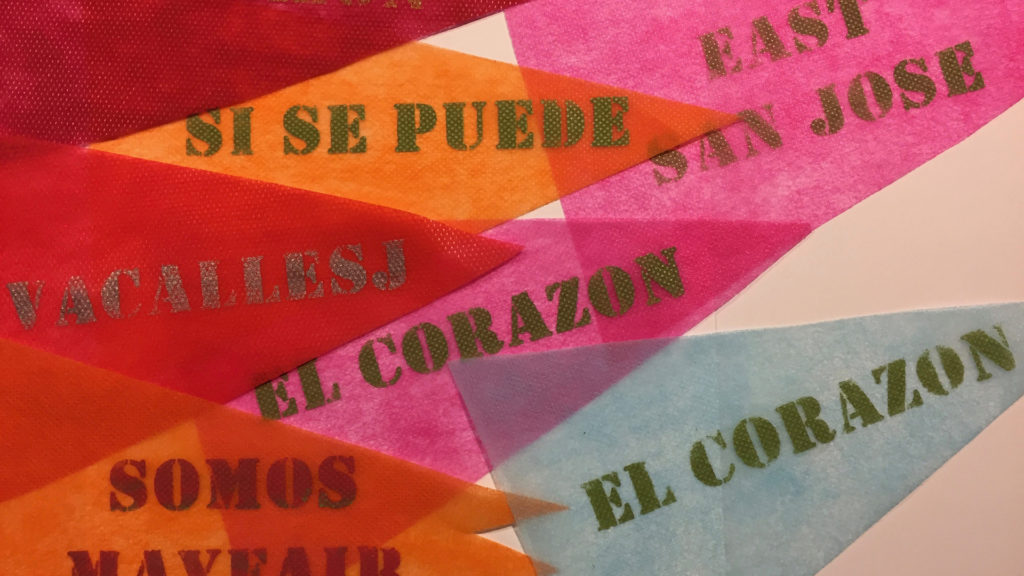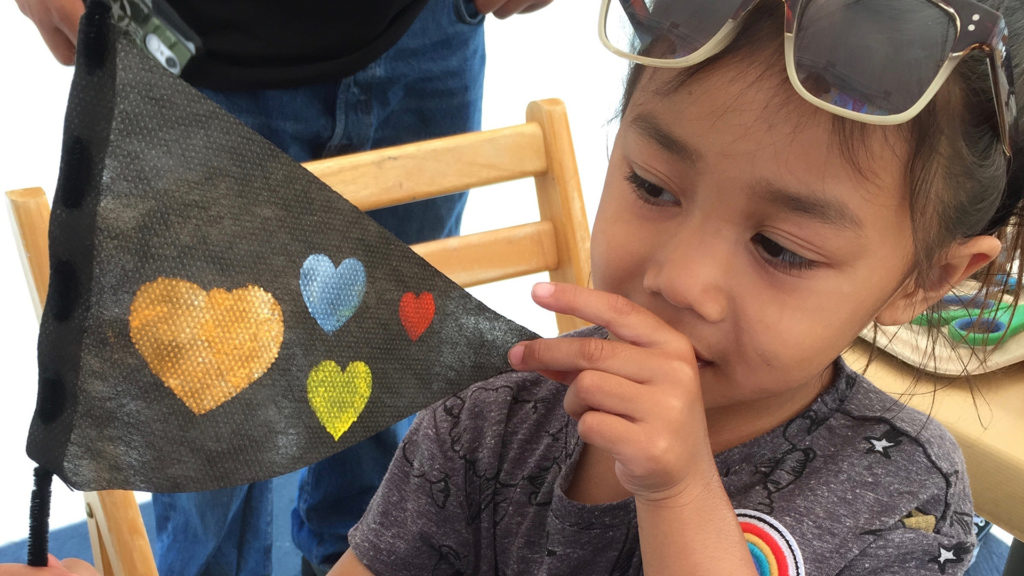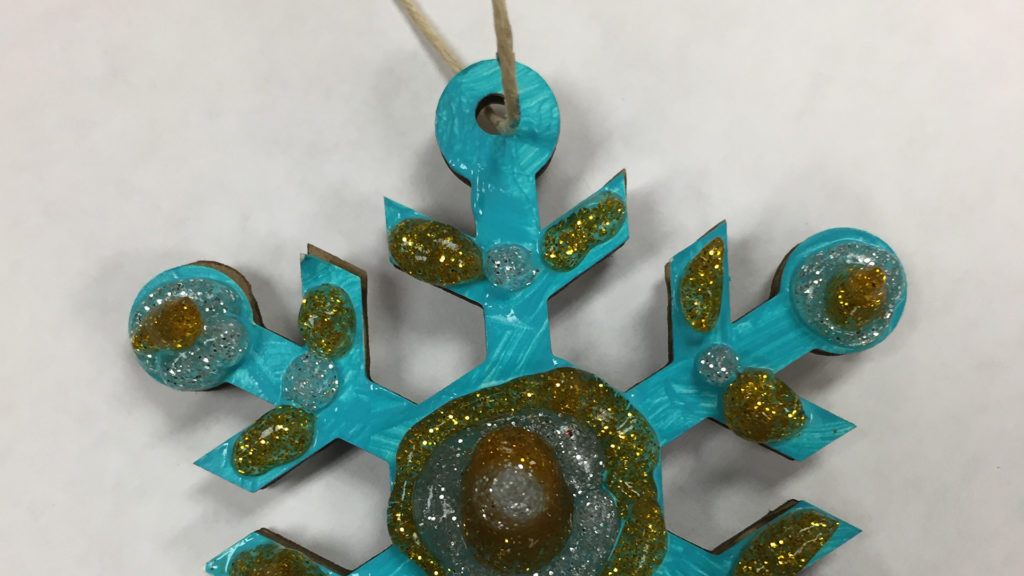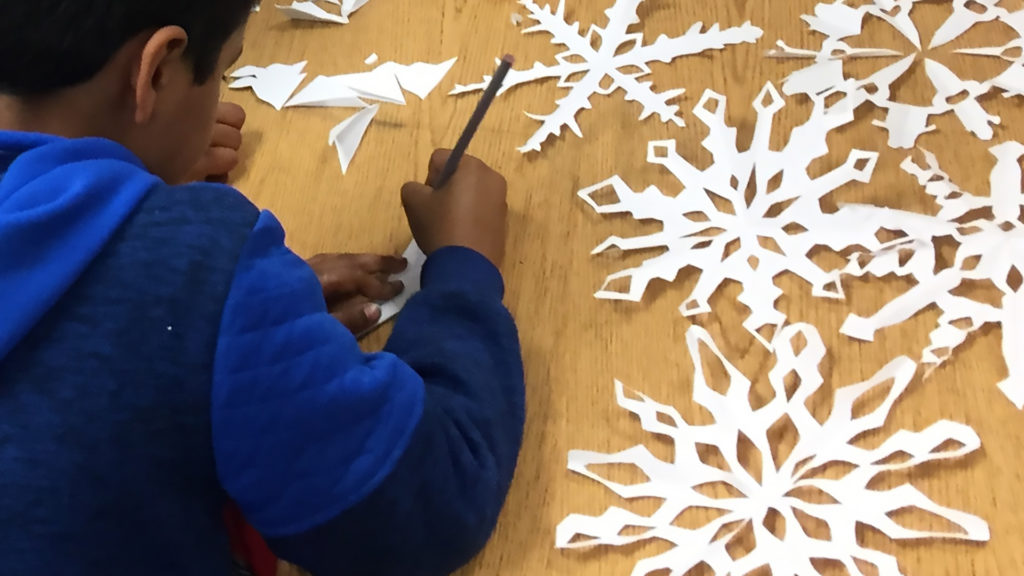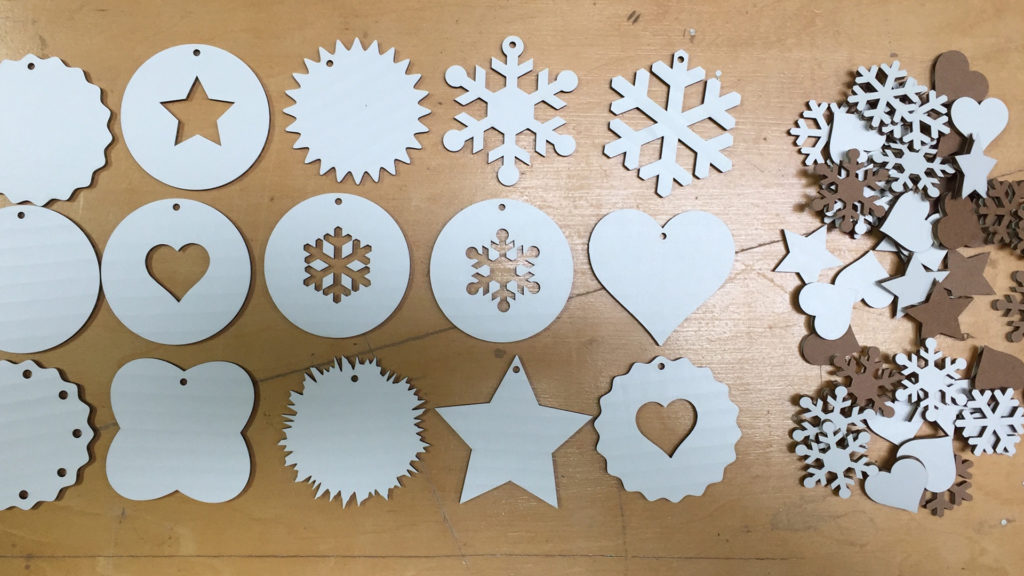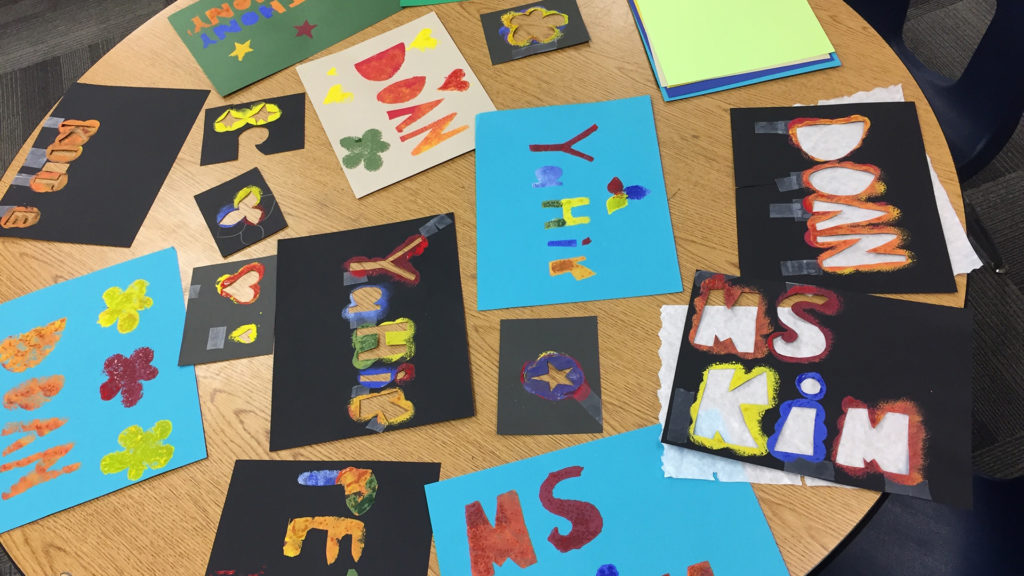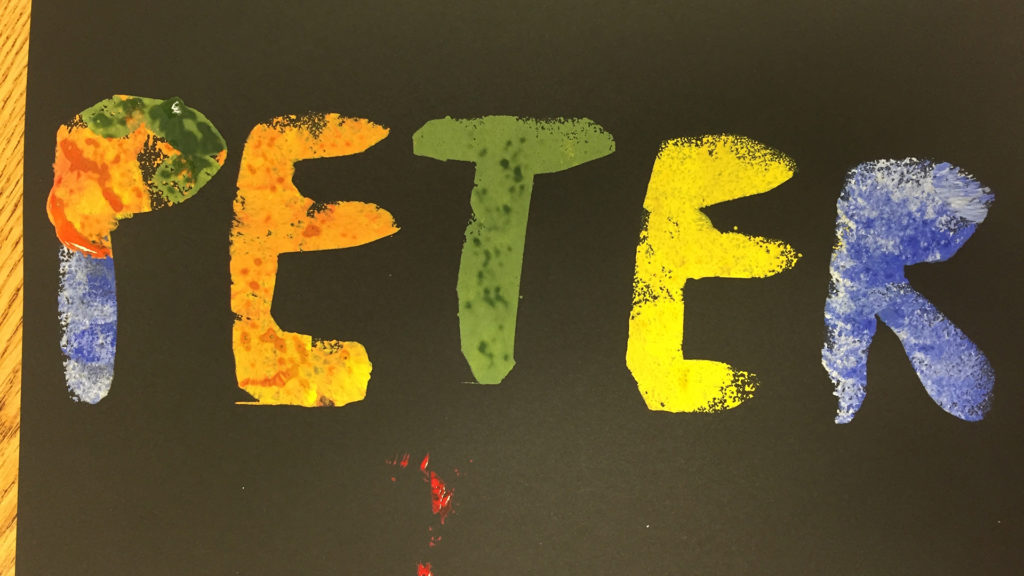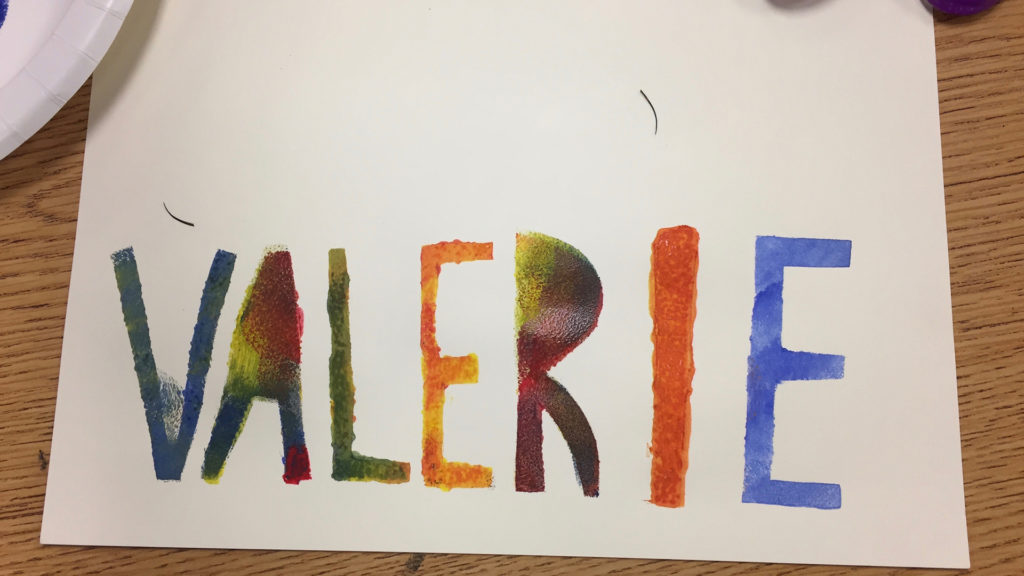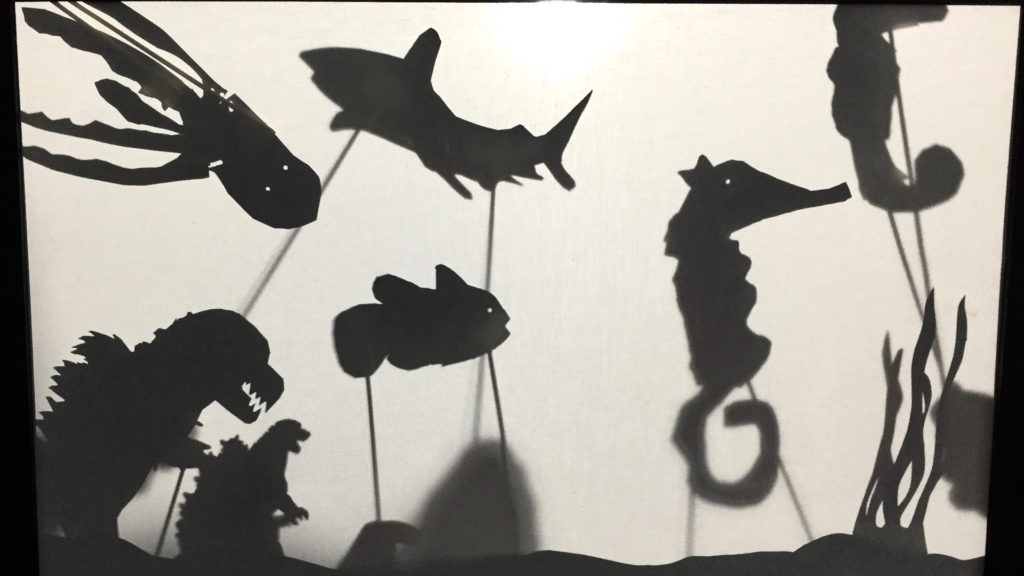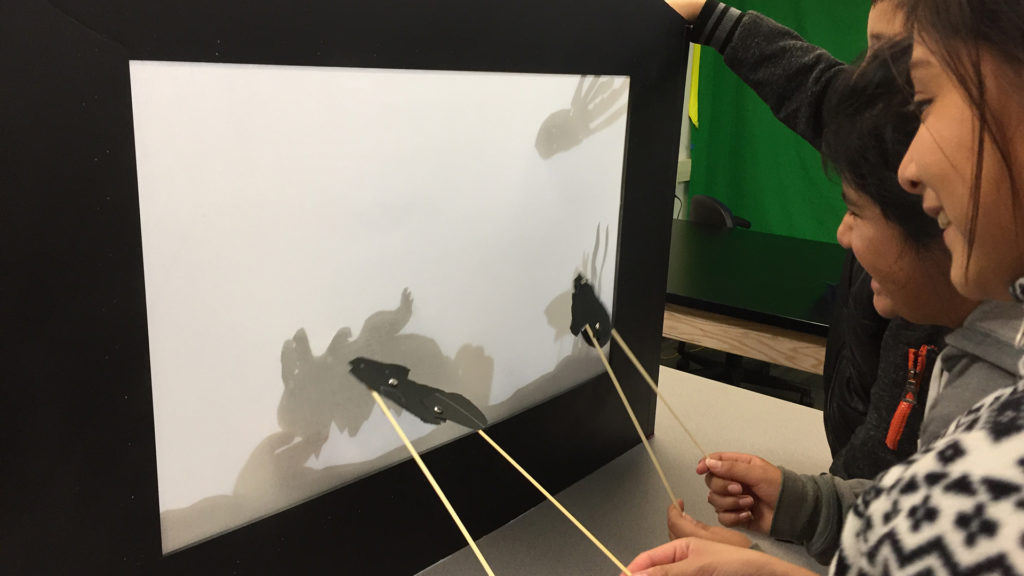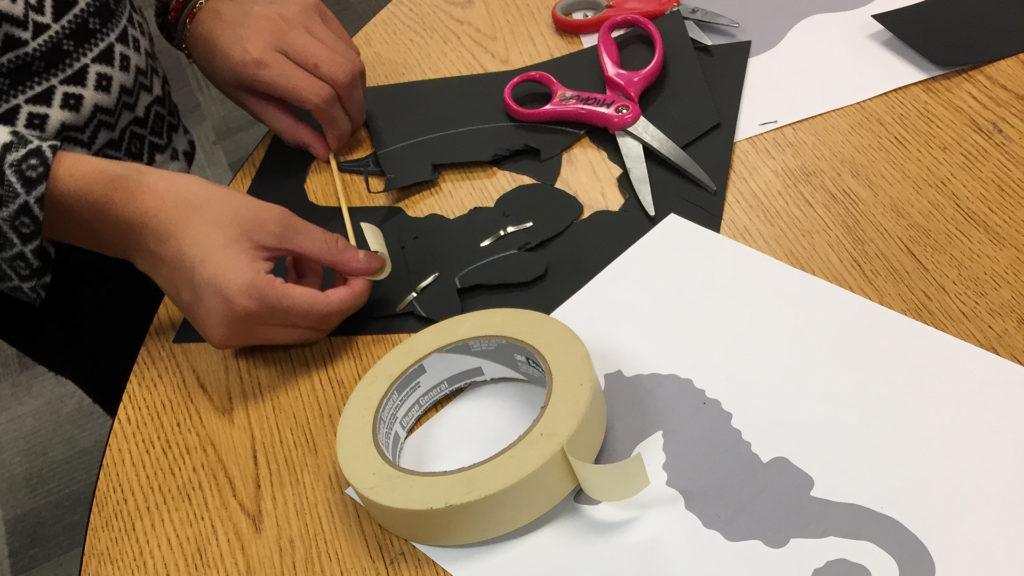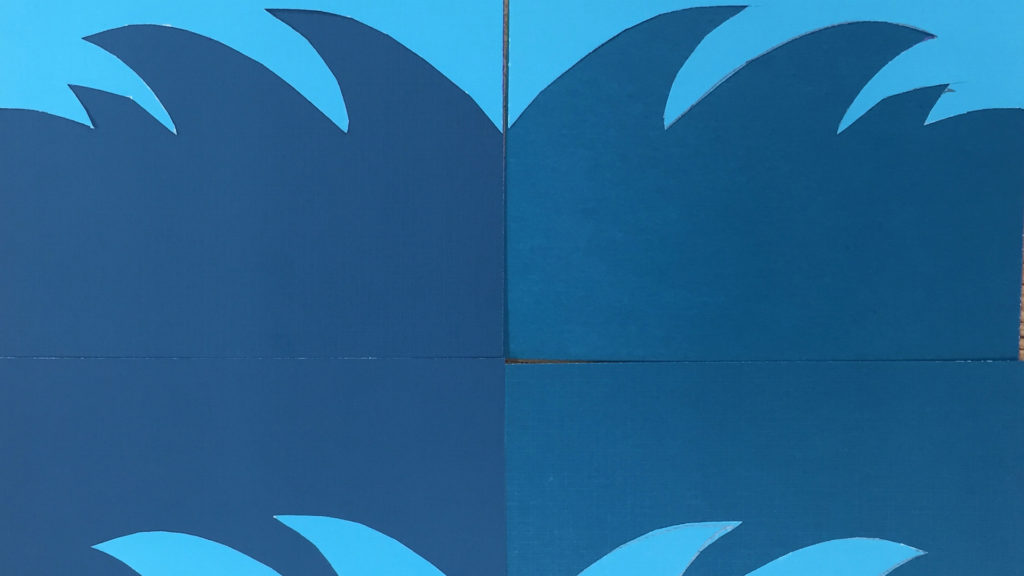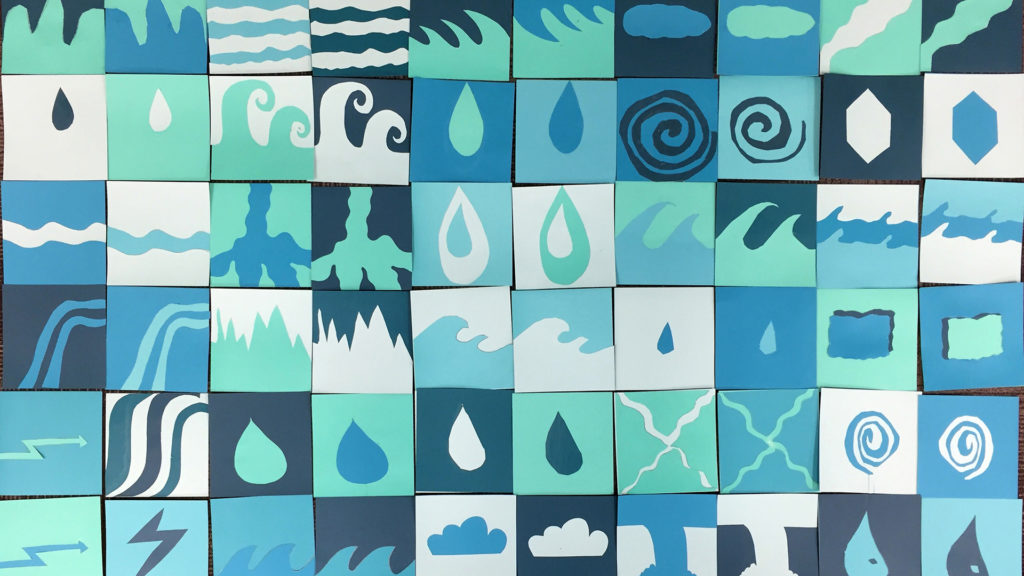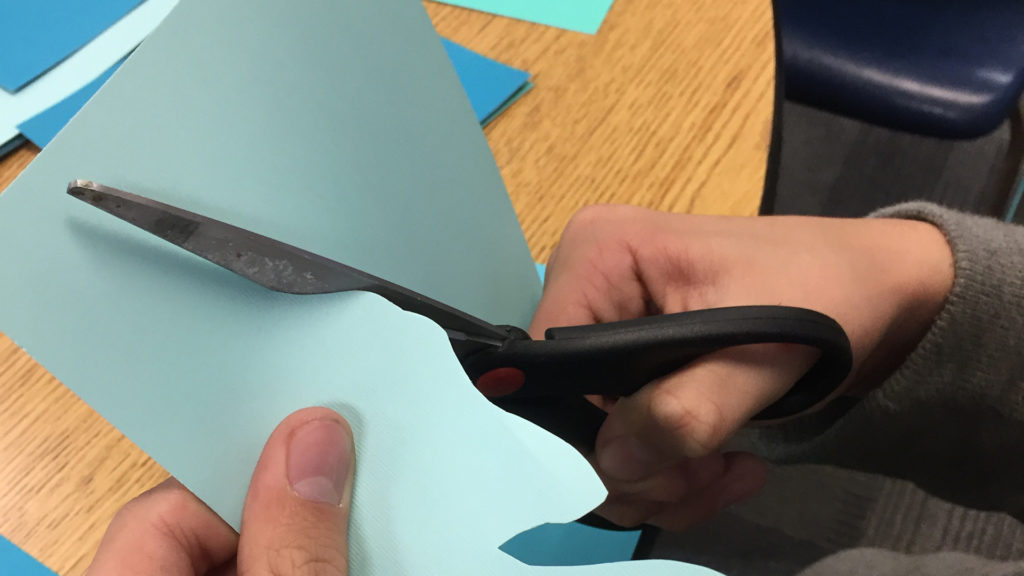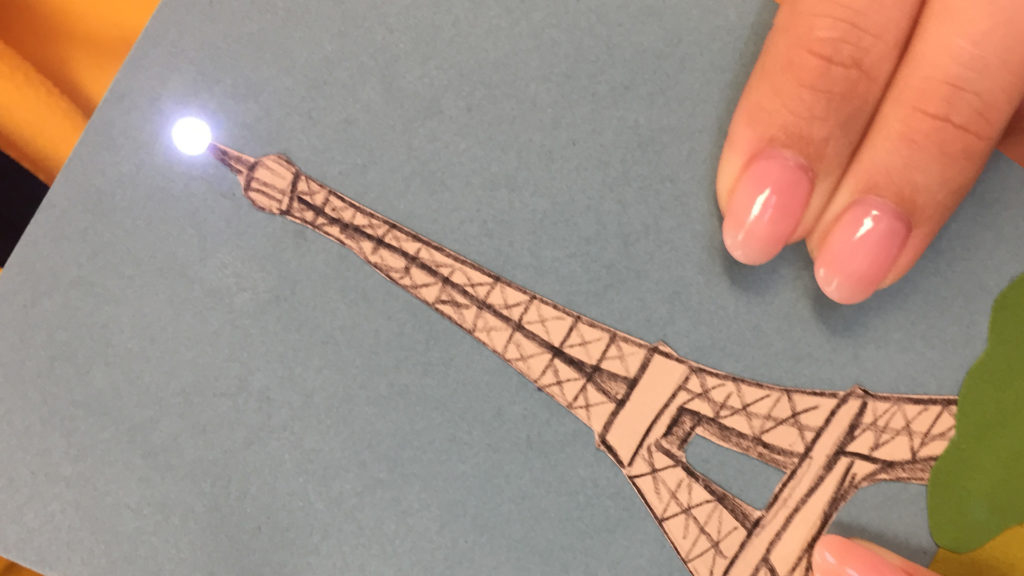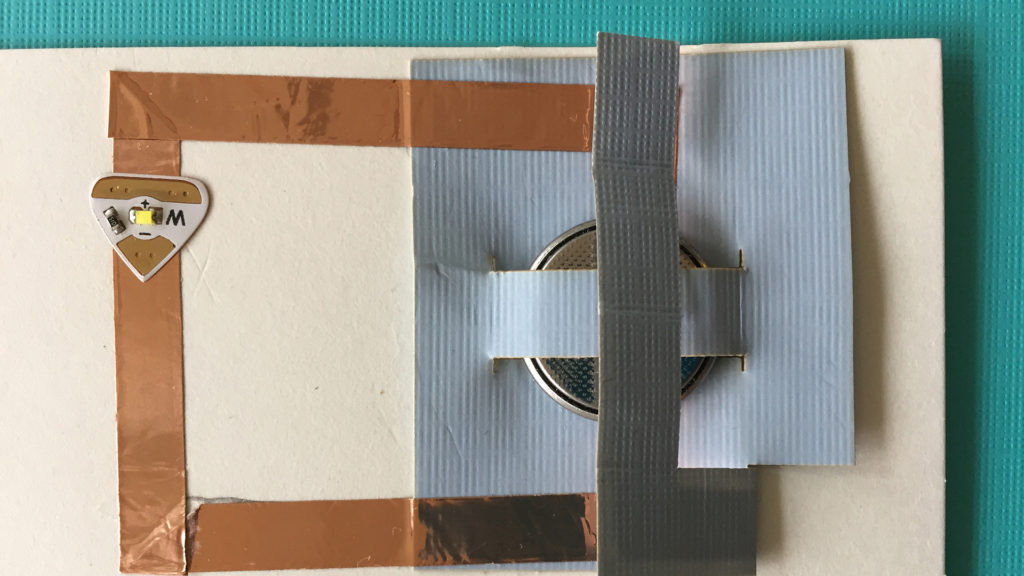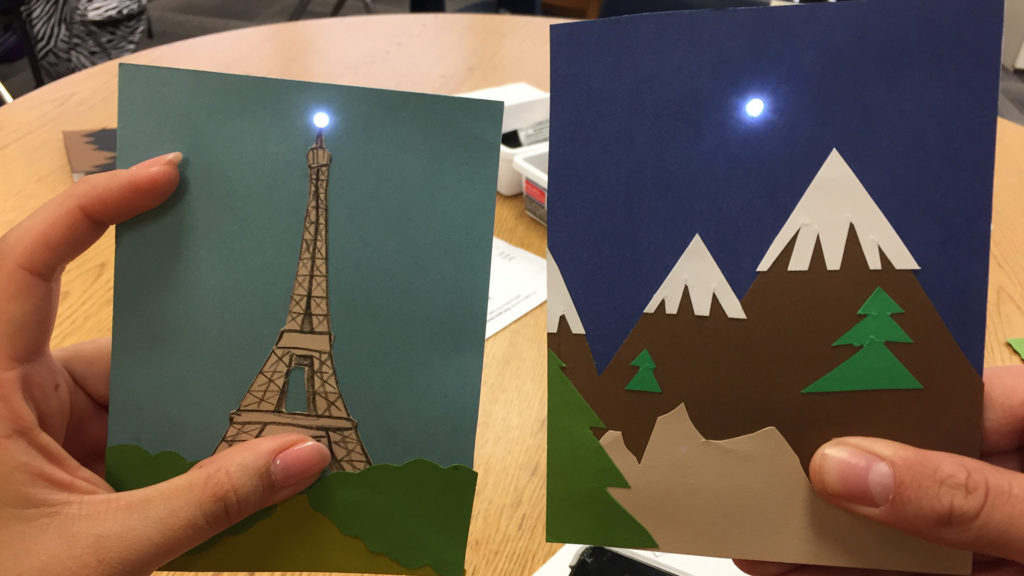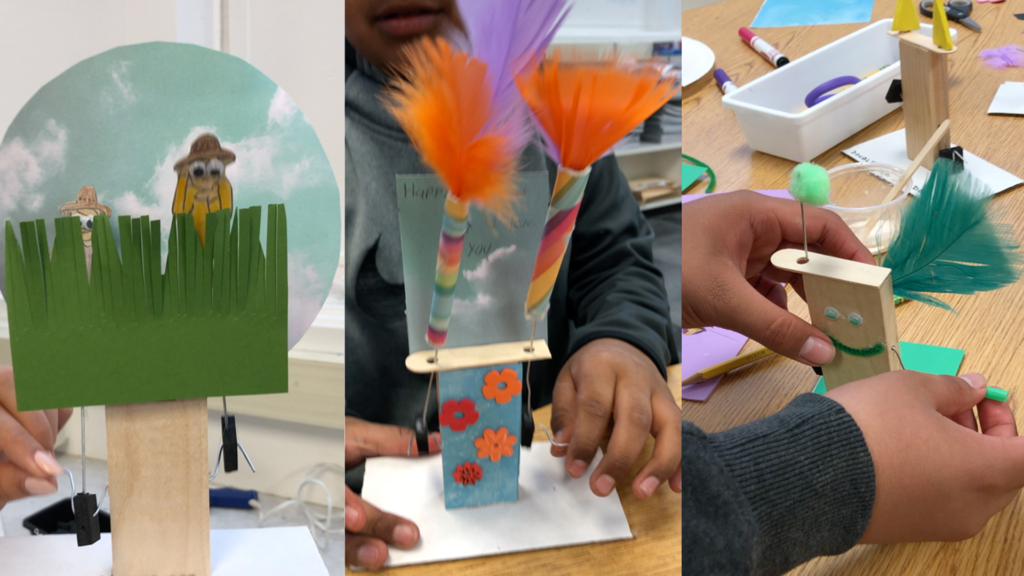Michele Guieu

Michele Guieu
Michele Guieu is a Bay Area environmental artist, maker, and art educator.
Her practice focuses on the importance of water, and the consequences of human activity on our watershed and the ocean.
Michele is an installation artist. Her work has been exhibited nationally and internationally, including MAC Paris, California Center for the Arts, Oceanside Museum of Art, San Diego City College Gallery, Currents New Media, ZER01 Biennial, and Rosalux Gallery. She has had solo exhibitions at the Musée des Merveilles, Art Produce Gallery, San Diego Art Institute, and Tech Shop San José.
She presented “Species Encounter”, a large-scale shadow theatre installation with public participation, at the Santa Cruz Museum of Art & History, SubZERO Festival, San José Convention Center, and Tech Museum. She has also created participatory installations at de Saisset Museum and the San Diego Museum of Art.
She serves on the Arts Program Committee at Alliance for Youth Achievement (AYA), and on the Education Committee at Montalvo Arts Center.
She created “The Water Project: From our Watershed to the Ocean”, an integrated art and science curriculum for grades K-9 which centers on the Bay Area watershed and ecosystems, and the need for people to care for the regions they live in. The curriculum employs diverse media, including shadow puppetry, collective installations, video narration, poster making, drawing, and painting.
She is one of the instructors for the Summer Art and Design Camp (AYA) since 2016. She has taught in schools in underserved communities in and around San José in the Teaching Artist Program, and art summer camps at Montalvo Arts Center since 2013. She presents professional development workshops for teachers at professional conferences, and community workshops at public events and festivals.
She has given talks on art and education at many venues including FabLearn Conference (Stanford University), Berkeley City College, Laney College, San José State University, Modernist Studies Conference, San Diego Museum of Art, Noel Baza Fine Art, Art Produce Gallery, and the San Diego Art Institute.
She earned her MA in Visual Communication at École Nationale Supérieure des Arts Décoratifs (ENSåAD), and worked for many years an an artist, artistic director, creative director (at Landor Paris), and independent graphic designer.
Originally from Marseille, France, Michele lived in Senegal and Paris before moving to Santa Fe in 2000. Since then she has lived in Austin, Charlottesville, San Diego, and finally the Bay Area.
Collaborations with Michele Guieu
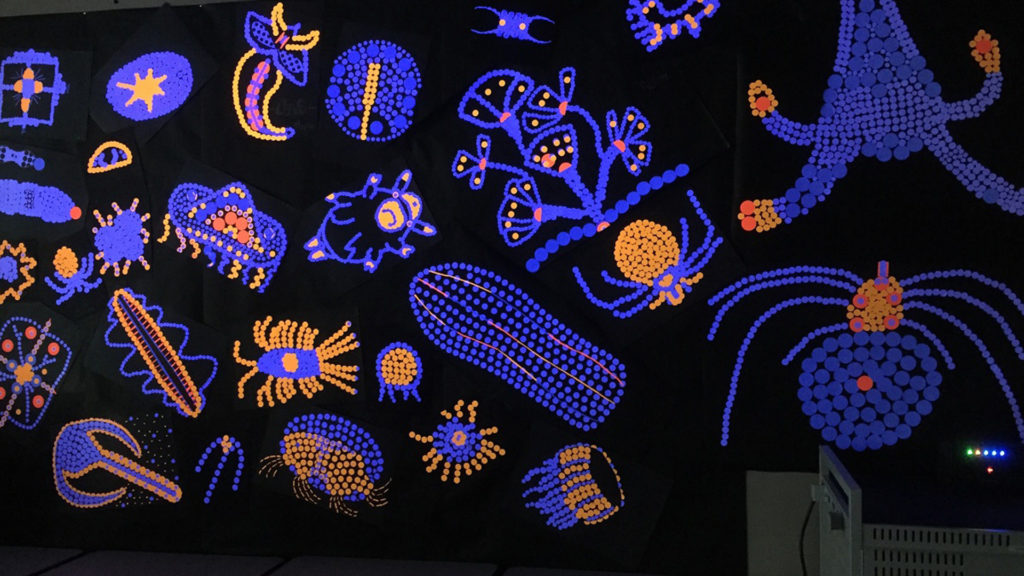
Art and Design Design Thinking Camp: Art and the Environment Week
The region we live in, The San Francisco Bay area is beautiful and fragile and need our attention and care. Discover the importance of water and the consequences of human activity on our watershed and on the ocean. From individual work to a group installation, campers make art and design projects, exploring mini-landscaping, graphic design, basic circuitry.
Week 1
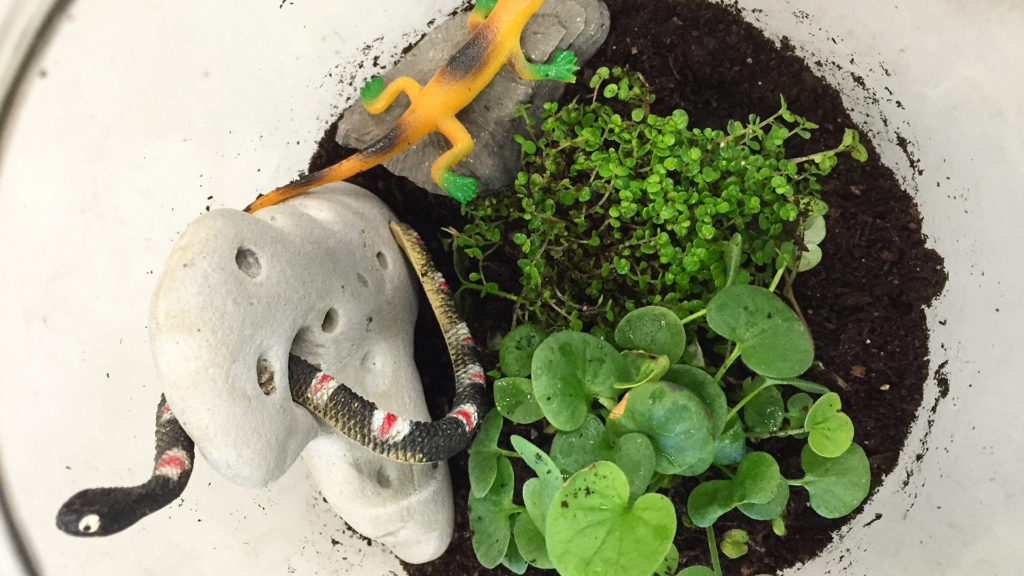
Make a Terrarium
Human activity can affect the water cycle. Why is the water cycle so important for the balance of ecosystems? Students build a terrarium with small house plants, soil, charcoal and gravel. They decorate it with personal elements like rocks, pieces of wood, creating a mini landscape.
Week 2
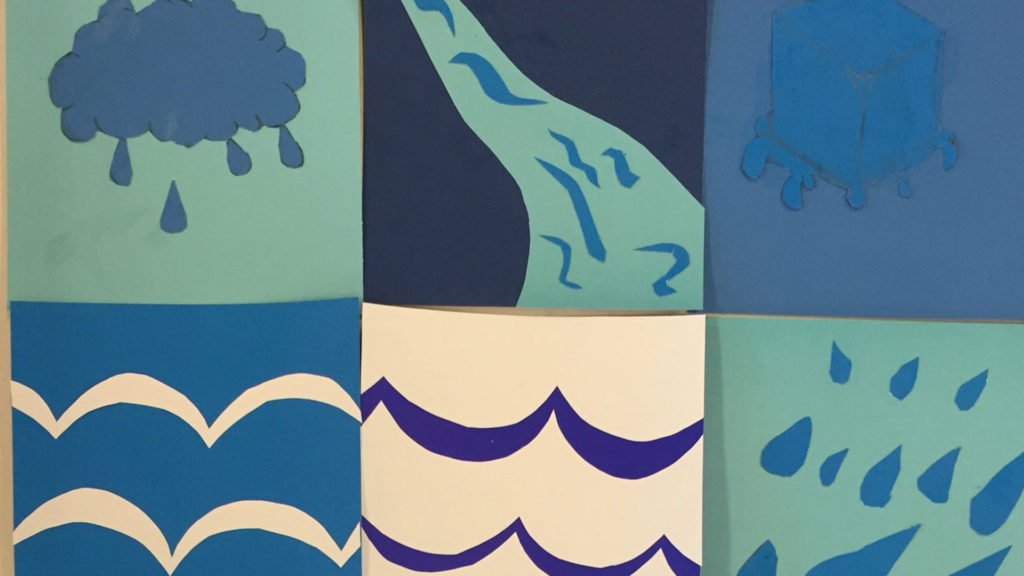
Create Symbols about Water
Using design thinking concepts (documentation, sketching ideas, refining ideas, prototyping), this exercise introduces the students to the importance of water on Earth and to graphic design basic techniques. What are the places where there is water on Earth? What are the uses of water? Students translate words about water into simple images, made of a few lines, using contrasts, positive and negative space.
Week 3
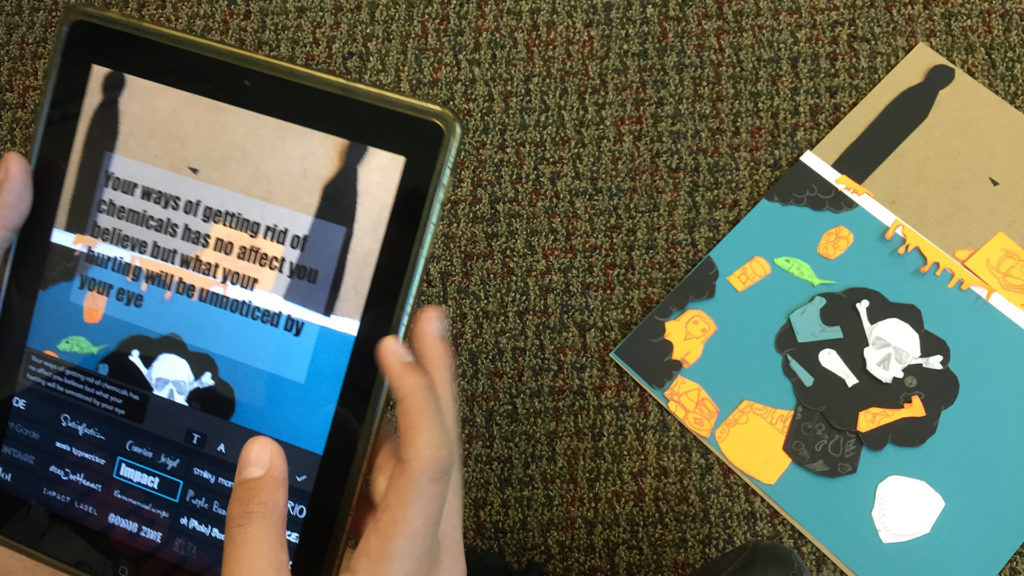
Make a Poster about Water Pollution
How can things I am doing at home can have an impact on the quality of the water and the health of the wildlife in the watershed where I live? How can I graphically express an idea with simple means? How does the different placement of the different elements (message, explanation, image) change the perception the viewer has of the overall image? Students work individually to create a unique digital poster about the watershed conservation, using a tablet and Pic Collage.
Week 4
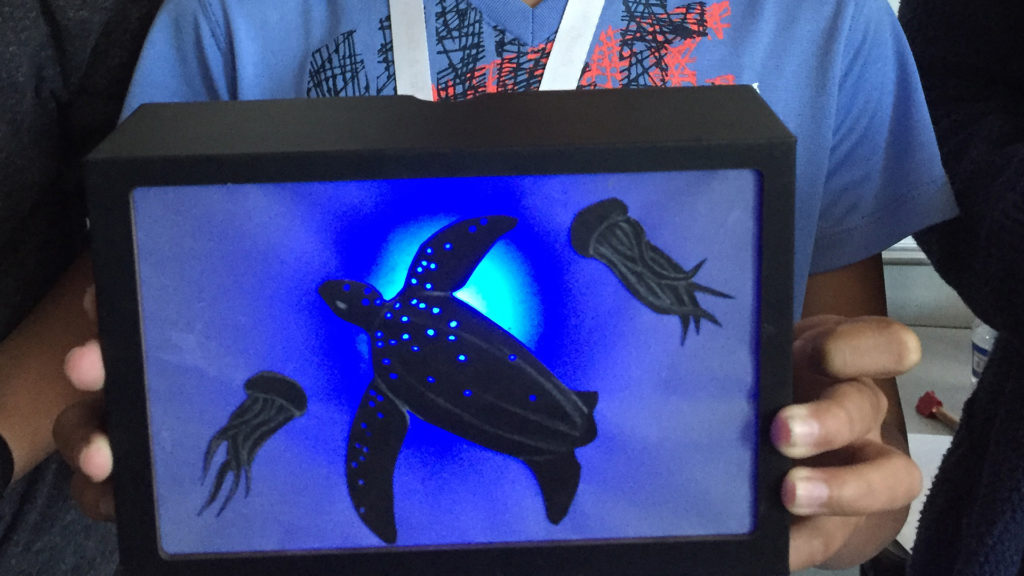
Make a Shadow Box about an Endangered Species
Students learn about the impact of human activities on marine species, and the major threats marine species are facing: overfishing/unsustainable fishing, inadequate protection (not enough sanctuaries), tourism and development, ship strikes, oil and gas pollution, consequences of aquaculture (pollution), climate change (change in ocean temperatures). They learn how to draw a recognizable shape to create a silhouette. They explore simple circuitry by constructing a simple circuit, with LED, battery, conductive tape, and a switch system.
Week 5
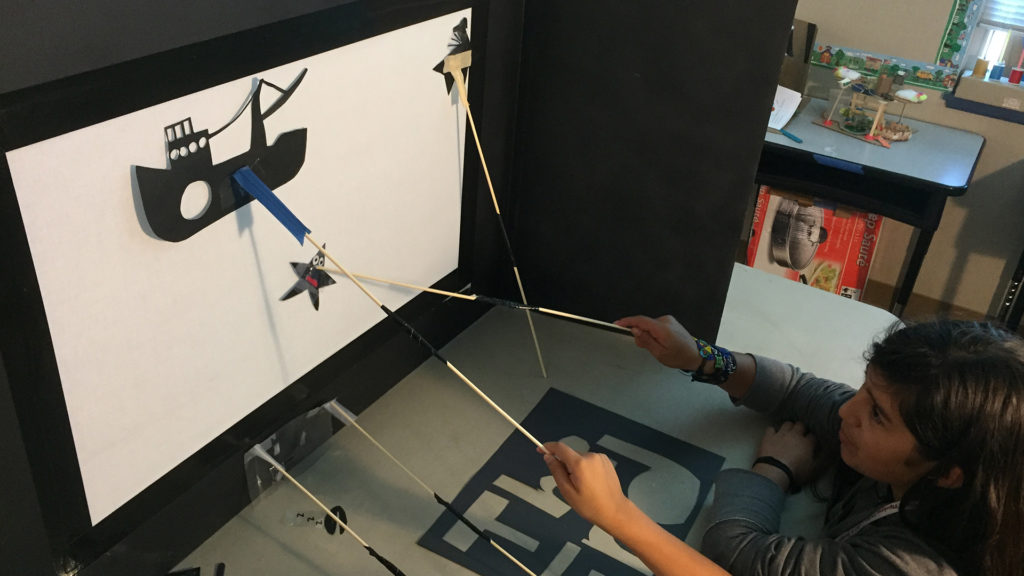
Short Video About the consequences of Human Activity on the Ocean
Telling a story about human impact on the ocean with a show puppet theater and documenting the story with a tablet to make a short video (01:00 – 02:00 min.). In small groups, students research aspects of human impact on the ocean, like overfishing, fishing techniques that damage the seafloor, by-catch (whales, sea turtles, sharks, birds), invasive species, tourism damage, plastic pollution. What makes a story a story? and How are we going to tell the story with shadow puppets? Students create a scenario, and write a simple storyboard. They make the props (with construction paper, skewers, and tape), using precise documentation for their shapes (fish, shark, turtles, fishing boats, coral, etc.). Students rehearse, present, revise and present again. They videotape and edit their video afterwards, adding title and credits.
Week 6
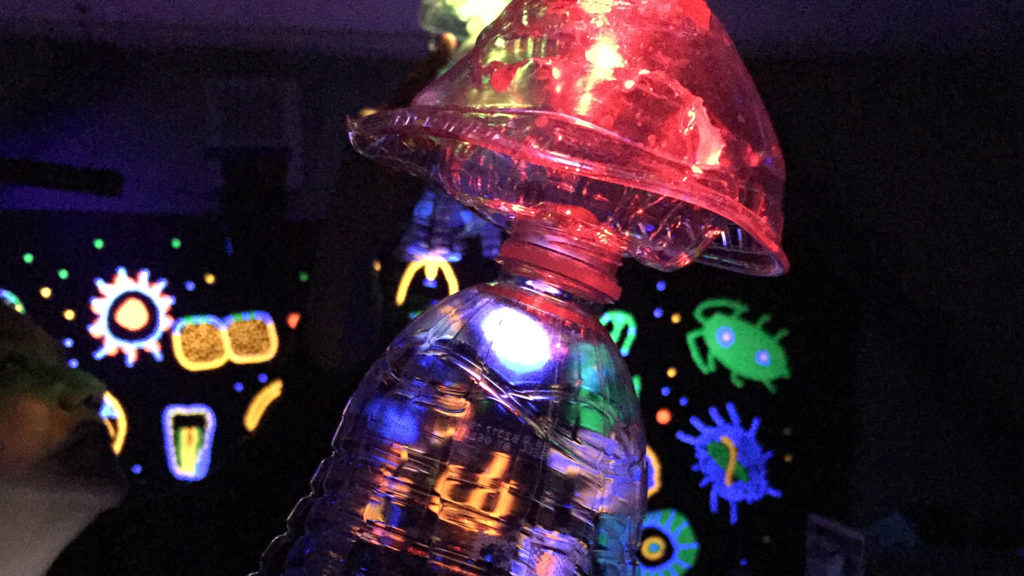
Make a light up Jellyfish
From getting stuck in nets to eating plastic that they think is food, creatures worldwide are dying from material we made. Plastic is a plague and we need to make decisions in our life to try not to use plastic when we can, for example with single use plastic bottles, straws, plastic cups at the coffee store, plastic containers at the take-away. Using plastic bottles collected in recycled bins, students make a jellyfish lit with an LED. Turn off the light and the ensemble makes a school of jellyfish floating in the darkness of the classroom.
Week 7
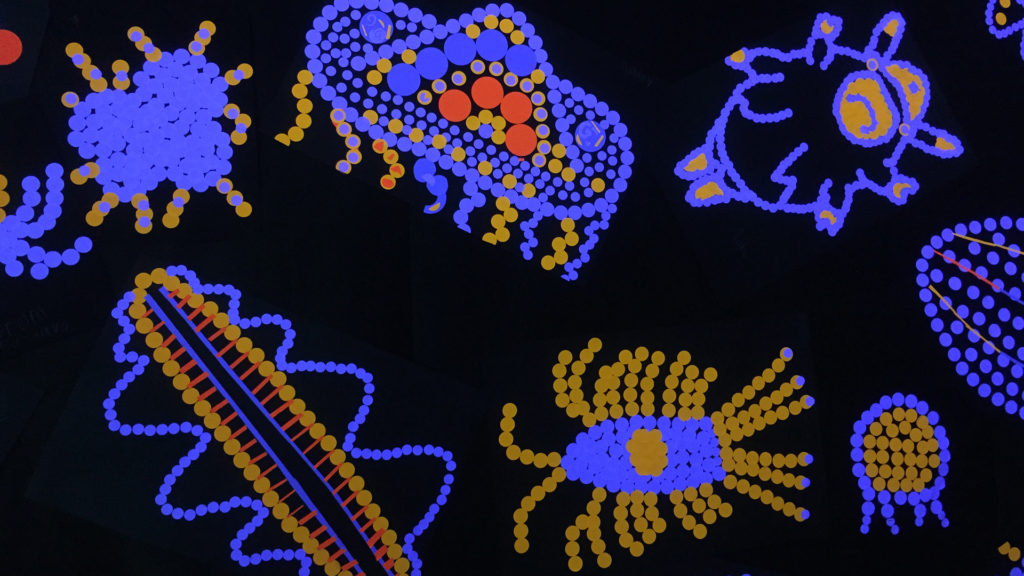
Make a collective luminescent Plankton installation
Students create elements for a collective mural representing an ensemble of enlarged plankton organisms. Why is plankton so important? Why should we care about it? Why should we take the time to create a mural that is a tribute to it?
STEAM Workshops and Makerspaces
Make a Stenciled Flag for your Bike
Makerspace held with Viva Calle and Somos Mayfair in East San José where bicyclists were invited to make banners.
Holiday Celebration - Opening of Mathson Makerspace
Make Paper Snowflakes
Use provided templates or come up with your own design to create 6-sided snowflakes with paper. Participants explore the infinite possibilities of snowflakes designs using different shapes and patterns.
Make Christmas Tree cardboard decorations
Use lasered cardboard templates to create unique decoration with an array of fun materials. Participants explore symmetry, textures, and patterns.
Make a stencil with your name
Design and create stencils with your name and a symbol. Students explore lettering and composition (balance, positive and negative space, contrast).
Make a shadow puppet inspired by the ocean - Shadow Theatre
Create a rod controlled shadow puppet of your own design and use it to tell your story on a shadow puppet theater stage. Students explore light and shadow play, mechanics (Linkages), personal expression and narrative elements.
Make symbols about water
How can you represent different states of water or different bodies of water (stream, rivers, lakes, ocean, waves, ice, etc. with the simplest shapes and lines? Students explore ideas, make symbols individually and create a collaborative piece with all the different symbols.
Make a light up card
Students design and create light up cards using Chibitronics LED light stickers with simple circuitry. The image is a collage of paper cuts. Students explore design simplification.
Make a Cranky Contraption
You can animate an object with a simple “Up and Down” mechanism. What could you represent that would use the mechanism to express an idea? Students explore simple mechanisms and narrative elements in a playful way. (From the Tinkering Studio at the Exploratorium San Francisco)


